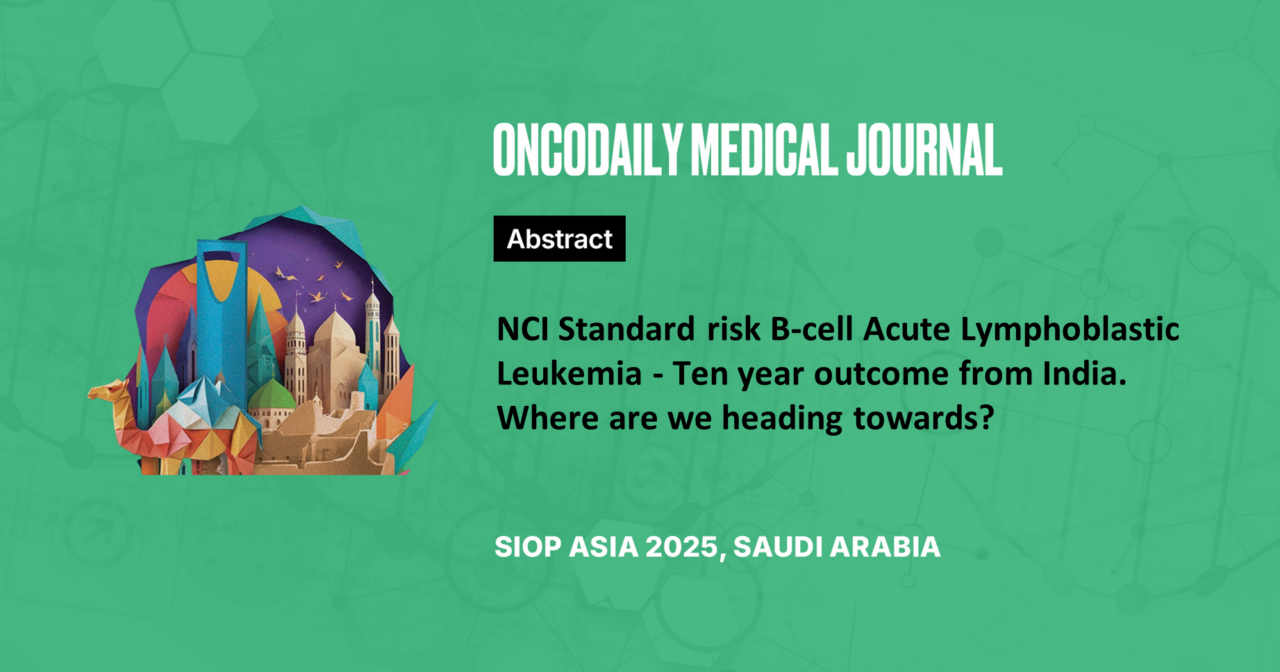NCI Standard risk B-cell Acute Lymphoblastic Leukemia – Ten year outcome from India. Where are we heading towards?
Abstract
Introduction: Contrary to the maximal survival rate of less than 90% in developing nations, large cooperative trials exhibit an excellent survival of 95% in National Cancer institute (NCI) standard-risk (SR) B-cell Acute lymphoblastic leukemia (B-ALL). Hence we analyzed the factors to improve the outcome in patients with NCI SR B-ALL at our Centre.
Methodology: Retrospective data of NCI SR B-ALL treated from Oct-2010 till Dec-2022 was collected. All patients received COG 1991 based chemotherapy regimen.
Results: Total of 149 NCI SR B-ALL with median age of 3 years (range 1-9) and male: female ratio of 1.5:1 were analyzed. Adding Daunomycin to induction chemotherapy did not impact survival (p = .720). Negative Minimal residual disease (MRD) post induction had lower relapse rate (15% vs. 36%, p=.001), better Event-Free (EFS) and overall survival (OS) {5yr EFS 87.77% vs. 72.72%; 5yr OS 91.11% vs. 81.81% (p=.016)} compared to MRD positive.
Patients who received high dose methotrexate had higher relapse (18.75% vs. 7.5%, p=0.001) and inferior 5yr EFS (87.5% vs. 94.3%) when compared to Capizzi methotrexate (CM). Cytogenetics was available in 81 patients and only 37% had favorable cytogenetics with a relapse rate of 16.6%. Gene sequencing done in 12 patients identified RAS mutation in 5 (41.6%), associated with favorable cytogenetics and had 80% OS. With a median follow-up of 85 months (range 6-176) 5yr OS, EFS and relapse were 90.45%, 86.39% and 17% respectively. Ten year OS and EFS were 85% and 83% respectively.
Conclusion: Lesser proportion of favorable cytogenetics with higher relapse rate than in western literature was seen in our cohort. Uniform cytogenetics, molecular characterization and MRD based risk allocation will definitely reduce the burden of therapy and better survival in NCI SR B-ALL. Uniform administration of CM will also lessen the relapse and improve survival.





